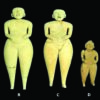A new study from The University of Western Australia and Edith Cowan University has found evidence of what’s long been suspected—that men are more likely to be risk-takers than women.
The research published in Evolutionary Behavioral Sciences investigated the age-old question, of why we associate risk-taking with males rather than females, from an evolutionary standpoint.
Study author Hannah Goodman, from UWA’s School of Human Sciences, said researchers found men engaged in riskier behaviors when crossing a busy traffic intersection, supporting growing evidence that risk-taking is predominantly an androcentric behavior.
“Males were more likely to cross the road under high-risk conditions than females, and less likely to wear a helmet when riding a bicycle,” Ms. Goodman said.
The team also looked at whether socioeconomic status had any impact on the level of risk taken, comparing behaviors across 13 suburbs in Perth.
“A total of 1,030 participants were recorded either crossing the road or riding a bike in the vicinity of the intersection from the discreet vantage point of a park, café or car,” Ms. Goodman said.
“We found risk-taking behavior was strongly influenced by area-level socioeconomic status, with individuals in areas of lower status more likely to cross traffic intersections in high-risk conditions.
“Age also influenced risk-taking behavior, with younger males taking greater risks at traffic intersections than those in older age groups.”
She said the research contributed to growing literature supporting “young male syndrome,” where men tend to take more risks during periods of peak reproductive competition, from late teens to thirties.
Co-author Associate Professor Cyril Grueter from UWA’s School of Human Sciences said, from an evolutionary perspective, risk-taking could be seen as a means for young men to display their qualities and skills competence which could make them more attractive to women.
He said the study had significant real-world implications, with young males more likely to be involved in traffic accidents—as pedestrians, drivers or passengers.
“Measures could be taken to enhance or design traffic intersections with the safety of everyone in mind, particularly in areas where risk-taking may be more prevalent,” Associate Professor Grueter said.
More information:
Hannah Goodman et al, The combined role of sexual selection and socioeconomic environment in explaining everyday risk-taking behavior in human males., Evolutionary Behavioral Sciences (2024). DOI: 10.1037/ebs0000351
Provided by
University of Western Australia
Citation:
Study suggests evolutionary basis for male risk-taking behaviors (2024, June 7)



